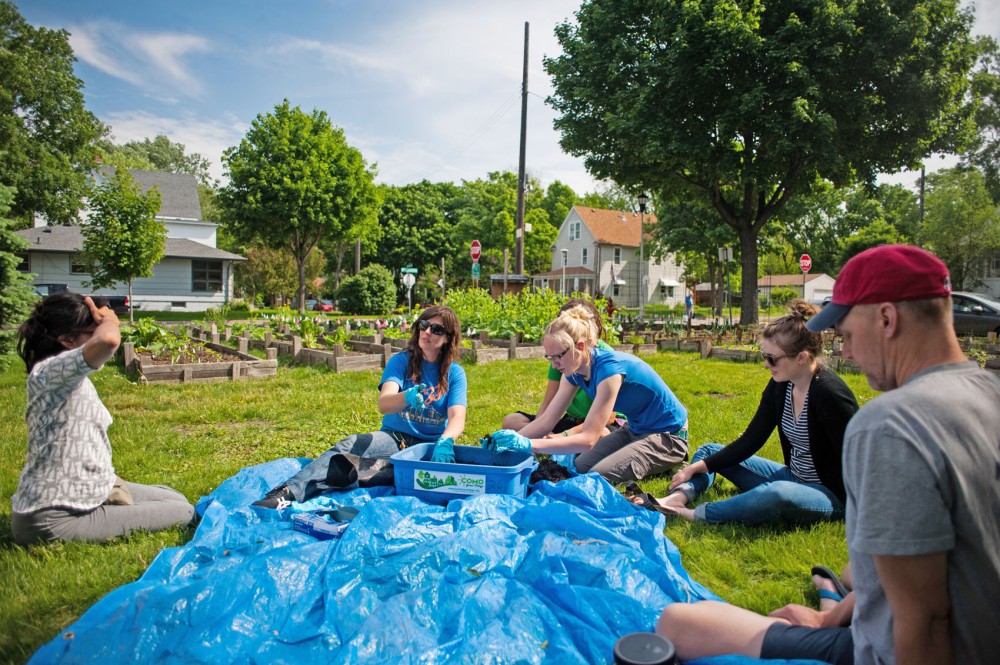With gardening season in full swing, community gardens give students and permanent residents a chance to work together in their neighborhoods.
The Southeast Como neighborhood has established a variety of community gardens, each with the goal of enhancing the neighborhood’s landscape and creating opportunities to bring community members together.
Opportunities to get involved vary by garden.
Flower gardens like the Como Corner Community Garden at 22nd and Como avenues Southeast, are kept up by volunteers.
“Anyone is welcome to help at any time,” said Stephanie Hankerson, a community organizer for the Southeast Como Improvement Association.
Volunteers may come regularly or attend any of the garden’s twice-monthly meetings to plant, weed and meet their neighbors.
Other gardens, like the FairShare Farm Community Vegetable Garden, require membership.
“Through our work in community gardens, we’re bringing neighbors together and building a sense of community,” said Liz Tucker, a recent University of Minnesota graduate and last year’s FairShare Farm intern.
The FairShare Farm, which communally grows and harvests a variety of fruits and vegetables for its members as well as partnering with the Southeast Seniors Block Nurse Program, has a limit of 30 members and currently has a waitlist.
Although only members can harvest the garden, there are ways for non-members to get involved, like with SkillShares, Hankerson said.
SkillShares, which are informal lessons taught by members, provide opportunities for non-members to learn about gardening techniques, composting tips and more.
Additional neighborhood projects, which range from building a shed to picking up litter on garden sites, allow community members to work together.
Although the gardens in the Southeast Como neighborhood are popular, students have found other places to farm in the city.
Mark Kruse, a University student and gardener at the East Phillips Community Garden in south Minneapolis, said community gardening is a “good way to bring people together, strengthen relationships and connect you to the community you’re living in.”
The Southeast Como neighborhood is made up of an increasing number of temporary residents like students, Hankerson said, resulting in decreased participation in community gardens.
Those involved with the projects say community participation is necessary to sustain Como’s gardens.
“The key is to have people involved on a regular basis,” said Brian Bahn, a FairShare farmer.
“Especially in a student community, that’s a challenge.”








